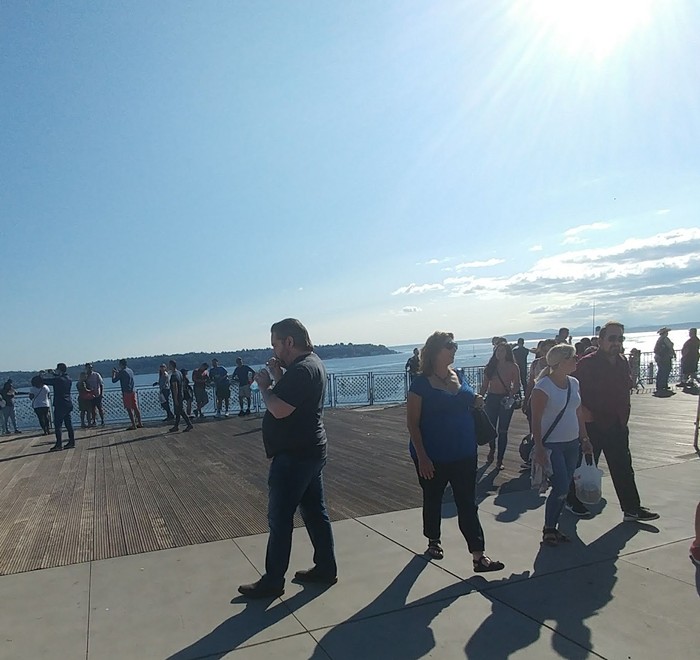
You might notice a haze over the Seattle skyline. That's smoke, drifting over Puget Sound from wildfires in British Columbia. Do you have questions? So did we, and we tried our best to find answers.
How long will the smoke last?
So long as the winds stay light, we'll have smoke. Expect the haze to continue for at least another three or four days, says Art Gaebel, a meteorologist with the National Weather Service.
How far does the smoke reach?
That's subject to change, but the above map shows coverage over Western Washington and Northwest Oregon. This map from the National Oceanic and Atmospheric Administration shows thick plumes over the Puget Sound region and large swaths of Eastern Washington.
What we can say for sure is that Seattle-Tacoma is about 500 miles away from the British Columbia fires.
Does this have anything to do with the heat wave?
The events are unconnected, according to Gaebel.
Is it safe to breathe outside?
On a scale followed by the Washington Department of Ecology, we're somewhere between "moderate" and "unhealthy" levels of air pollution, according to spokesman Larry Altose. At the unhealthy stage, everybody should limit outdoor exposure. Also, avoid exercising. The smoke is worse for children, seniors, pregnant women and people with vascular and respiratory illnesses.
Altose says the Ecology Department is measuring particulates at 2.5 microns, or 1/1000 millimeters. For comparison, a follicle of hair measures about 50 microns.
Is the smoke bad for eyes?
For some people, it could be an irritant. "Everybody has a different trigger or threshold for how things affect them. I would take seriously if people say they’re feeling that way," Altose says.
What about animals?
Altose: "Everything that breathes would be affected in some way. There’s no way to protect wildlife from this."
How about birds? Will they fly into buildings at higher rates due to less visibility?
The smoke is not thick enough to greatly impair a bird's vision, who only need about 100 to 150 feet of visibility. "Maybe an Eagle will circle lower because they can’t see as well," said Altose. "I think our main focus here is human health impacts because of the parts of the population that are particularly vulnerable to the fine particles you find in smoke."
What about airplanes? Will this affect my upcoming flight?
Possibly. Planes need to see farther than birds. The Federal Aviation Industry is reporting delays at SeaTac International Airport. Check your flight.
Is this what it's like to live in Beijing?
Says Altose: "They have a lot of coal burning energy in China and they also have dust storms quite frequently because of issues in the Gobi Desert or issues adjacent to it. They’re having agricultural practice issues contributing to their dust storms. They have more particulate matter and pollution more frequently than we do."
Do smoke clouds, like hurricanes or forest fires, have names?
Not for to the National Weather Service or Ecology Department. "We’ll probably just call it the Summer 2017 Smoke Event," says Altose.















